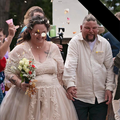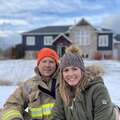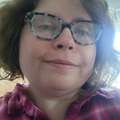My Interview On “Connecting Caregivers” Radio Show with Linda Burhans
By Adam Pick on September 8, 2020
In case you missed it… I was recently interviewed by Linda Burhans from the “Connecting Caregivers” radio show.
As you may know, Connecting Caregivers is wonderful effort that Linda started to help caregivers supporting friends and family members with health issues. During our discussion, we discussed several important topics related to heart valve disease including the Active Living Initiative, our survey results from 3,000 patients, the realities of valvular disorders and new treatment options.
Thanks to Linda and the “Connecting Caregivers” team for all their work educating and empowering caregivers!!!
Keep on tickin!
Adam
P.S. For the hearing impaired members of our community, I have provided a transcript of my video interview below.
Linda Burhans: Right now, we have our next guest on the phone, Mr. Adam Pick.
Adam Pick: Hi, how are you?
Linda Burhans: Joyful and grateful, how are you?
Adam Pick: I’m doing fantastic. Thanks for having me on today.
Linda Burhans: I’m really glad you’re here today. I just found out about Adam, recently. Adam is a heart valve patient and author of The Patient’s Guide to Heart Valve Surgery. In 2006, Adam founded heartvalvesurgery.com to educate and empower patients from diagnosis through recovery. The award-winning website, which is sponsored by over 40 cardiac centers, has helped more than ten million people fight heart valve disease. Wow! Adam has been featured by the American Heart Association and is currently followed by over 300,000 people on social media. Go Adam!
Adam Pick: Crazy, right?
Linda Burhans: Crazy.
Adam Pick: Unbelievable.
Linda Burhans: I know. I do a Tuesday tip for caregivers. This week, the one tip alone got over 7,000 views. I’m like, what the heck?
Adam Pick: Yeah, we’re in a fantastic time for connecting in different ways to really educate and empower all types of people including caregivers.
Linda Burhans: Yeah, but you know the thing is too it gets a little scary sometimes. You go on that internet, and you do a search, and you can get too much information or not the right information. I looked at your website and everything. That is just off the wall fabulous. Tell us a little bit more about yourself. What is the Active Living Survey and The Awareness Initiative?
Adam Pick: Yeah, so thanks so much, first, just by having me on your show, and being connected to your platform, and having experience to share with your listeners some information that actually could save someone’s life. This is really important what we’re talking about here. To answer your question, yeah, I’m a patient. I’m going about my life. I’m a technology guy. I’ve worked in hardware, worked in software. I’ve been in the internet space now for almost 20 years. I was diagnosed with aortic stenosis. Are you familiar with that disease?
Linda Burhans: No, I was not at all.
Adam Pick: Yeah, and so what it is is a narrowing of one of the heart valves in your heart. You’ve got four of them. One of mine was not working well. It was narrowed. It was stenotic. When that happens –
Linda Burhans: How old were you?
Adam Pick: Great question, I was diagnosed with it when I was a child as a heart murmur. You may have heard that term before.
Linda Burhans: Yeah, that I’ve heard.
Adam Pick: Yeah, and a heart murmur is one of the signs that you may have some form of valvular defect. What the challenge here is when the heart valves aren’t working, guess what can’t get through the heart properly?
Linda Burhans: Blood.
Adam Pick: Blood can’t circulate to all the other organs and all the other important tissue that we need to live. Over time, heart valve diseases like aortic stenosis, or another one is mitral regurgitation, they can really debilitate patients, make them very sick with symptoms like chest pain, fatigue, shortness of breath. You can’t walk upstairs. You’re tired all the time. You could have abnormal heart rhythms. This is a really serious disorder, and here’s the challenge. It’s under diagnosed. It’s misdiagnosed. It’s undertreated.
Linda Burhans: Yeah, I don’t understand why we can’t go for tests to find out things before we have a heart attack or something. Why don’t they offer that?
Adam Pick: Yeah, when that is –
Linda Burhans: They don’t offer anything until you’re hurting bad.
Adam Pick: Yeah, so it’s so near and dear to my heart as to why I started Heart Valve Surgery after I had my heart valve procedure. The reason is because there was so much lacking information. There was such a lack of awareness to this disease. Just to give you an idea, if you were to ask people over the age of 65, are you aware of heart valve disease, 30% of them will say, what’s that? That’s really scary.
Here’s the scary part. It’s a degenerative disease, so many of the patients are in their golden years of life, more senior folks. If this disease, in particular, aortic stenosis, is not caught, and you experience severe aortic stenosis with symptoms, in 24 months 50% of the patients will pass away.
Linda Burhans: Oh, goodness.
Adam Pick: Yeah, and that’s why in the medical community aortic stenosis often goes by the term, the silent killer. That’s why when I said at the beginning of the conversation if one of your listeners may have some fatigue, may have a chest pain, may have some – and they go get diagnosed, this conversation can save their lives. That’s why it’s so important to me to get the word out there and get the awareness up.
Linda Burhans: All right, so someone has those feelings, and then they go to the doctor and they have some conversation with them. What kind of conversation do they have?
Adam Pick: Yeah, so it’s a great question. It’s hard to say because every patient is unique, right?
Linda Burhans: Right.
Adam Pick: They’re all going through their own experiences with this disease that progresses at different stages of the disease. It can happen over a period of years. You asked when did I get it? When did I know about it? I was seven years old when I was diagnosed with it. I didn’t need a procedure until I was in my 30s. Again, it’s what they call an insidious disease. That’s why it is so important that one, if you have those symptoms we talked about, you go see a doctor.
Then two, if you are diagnosed with it, you know what you need to do? You need to get regular checkups. That means potentially an annual – what they call an echocardiogram. Some people may have heard of it as an ultrasound. That gives the doctors the information they need to understand, geeze, how severe is this disorder, and then when, if the time’s right, to get treatment. Does that help?
Linda Burhans: Yeah, now is there anything people can do to avoid this?
Adam Pick: Another great question, right, so this is a structural heart issue. This is a definitive problem with the way your valve is. Over time, it just gets worse. The valves don’t open or close properly. You hear that in some cardiac disorders, eat better foods, exercise. Those things all apply to appropriate cardiac function. When it comes to valve disease, it’s not like you can take a pill, and your aortic stenosis will go away.
Linda Burhans: It’s going to get repaired, yeah.
Adam Pick: Yeah, in fact it’s going to get worse, most likely.
Linda Burhans: Wow, so what do you wish people would understand about the role of caregivers during treatment and recovery for heart valve disease.
Adam Pick: Yeah, well, I’ve got to tell you, a lot of that learning came from the Active Living Survey.
Linda Burhans: Tell me about that.
Adam Pick: Yeah, it’s really a special experience. We got a unique glimpse into the experiences of patients from the time they were diagnosed to the time they felt recovered. It was a survey of over 3,000 people. We really got to learn what they were going through. The findings were fantastic. One of the big ones was nearly half of all the patients said, you know what, I’m going pick – I’m going to select a treatment that is going to get me my life back, get back to living, faster.
What active living means is different for different people. Some of our survey respondents said, hey, I want to get back to exercising. Other folks said, geeze, I want to go travel the world. Other folks said, I just want to spend time with my family. The other really big finding was about 27% of patients said, you know what, if I was to do this all again, I would have done it sooner. That’s really interesting because 64% of patients said they were afraid of death from the procedure. Here’s the big number: 80% of patients said they were extremely satisfied with the result.
When you think about the fact that there’s these new minimally invasive techniques that can treat heart valves without incisions to the chest or the ribs, that number went up to 98% extremely satisfied. It was from all of these findings, these really important findings, that we learn, hey, what does this mean for the caregivers? How can this impact your life?
Really the misconceptions in the roles is the caregivers have it the hardest. They have the most difficult job when it comes to valve disease. When you think about it, it makes sense because valve disease, as we talked about, it’s degenerative. They have to be on guard, all the time, looking for hey, what’s wrong with my loved one? Are they slowing down?
Linda Burhans: Such a worry.
Adam Pick: Yeah, can they walk upstairs? Did they miss their annual checkup?
Linda Burhans: Yeah.
Adam Pick: Right? They need to go. They need to get checked out. Here’s the really great news.
Linda Burhans: We all need to go for checkups. I mean, early detection on anything is the best deal.
Adam Pick: I couldn’t agree with you more. That’s why it’s interesting because there’s the doctors out there that can help treat this. There’s the patients that can get treated. As I always tell the folks in our community, this takes a – it takes a village to handle heart valve disease. You have to get all your ducks in a row.
One of the biggest ducks that I found in my experience was my family and my friends. It was so important to have, now, my wife, my mom, my brother, my friends. They all came and visited me. They gave me the support. They gave me the encouragement. Yeah, this is a big deal. We are talking about heart surgery. I often joke, it’s not like getting your hair cut. This is a big deal.
Linda Burhans: Yeah, well, it was good that you had all that family support because lots of times people don’t have that. That is such a big part of a recovery from anything, I believe. I think part of the reason is because the caregivers don’t reach out for that help, too.
Adam Pick: Open communication, I’m a big believer in it. That’s one of the reasons, at heartvalvesurgery.com, where you can get so much information. This is information that’s coming from doctors. It’s coming from researchers.
Linda Burhans: It’s all up to date.
Adam Pick: It’s all up to date. It’s also coming from other patients. You talked about those lacking connections that may exist for patients. To me, it brings a sadness because this is something that’s hard to go through alone. It’s one of the reasons I have spent so much time creating this website so that people can connect. They don’t have to feel alone. That’s one of the biggest challenges, I’d say, with heart valve disease.
You and I had this conversation already. A lot of people don’t even know what it is. If you don’t know what it is and you’re diagnosed with it, you can go into a very dark – and for some patients, a very depressive state. I’m all about empowerment. that’s what my team and I are fired up to do, and why we did this whole Active Living Campaign. We want to bring these learnings to the world and help people understand that there’s a bright side to cardiac disease. That bright side that I’ve experienced is a completely new second chance at life.
Linda Burhans: Yeah, that’s so important. I just want the listeners to hear this. I find people take better care of their cars than themselves. You don’t wait until the car is already broken. You do the oil change, or you get the diagnostic, or you do the whatever. You need to do that with your body too.
Adam Pick: You brought up one of the most important points, and the most timely points, is COVID-19, what that is doing for the healthcare system. It’s sad because you talked about people taking care of their cars. You know what? People right now – and I understand it. I have empathy for them. I can relate to those concerns about going to see my doctor because I don’t want to go to a hospital where I can get infected. Here’s the challenge. You may have seen this. The American Heart Association that people have been putting off their heart disease checks. They’ve been putting off their treatments. Do you know what’s been happening?
Linda Burhans: They’re getting worse.
Adam Pick: Health emergencies.
Linda Burhans: Yeah.
Adam Pick: Stroke.
Linda Burhans: Yep.
Adam Pick: Heart attacks. If you’re listening out there, and you’re taking better shape, better care of your car than your heart, please, please, please don’t wait to go see your doctor if you’re experiencing symptoms if you’ve been told you have heart disease. The other really dangerous wrinkle in this whole heart valve ecosystem is that heart valve disease can also be asymptomatic. You may not even know that you have it. That’s why, again, to your point, going in, being preventive, making sure that you get your checkups even at the primary care level, it can help you. It’s going to help your family. In the long term, it’s going to help your life.
Linda Burhans: Yeah, so it’s been wonderful having you on this show. Where should our listeners go to learn more? It will be on my page and everything, but you tell them also please.
Adam Pick: Yeah, that’s so much. It’s so simple. At your keyboard, or on your smartphone, all you have to do is go to heartvalvesurgery.com, very simple, heartvalvesurgery.com. We have over 10,000 pages of information there to help you learn all about your heart valve disease, and learn about how to manage it, and treat it, and you also get this great chance to learn about the Active Living Survey and the Active Living Campaign that we recently launched.
Linda Burhans: Absolutely wonderful, thank you, Adam.
Adam Pick: You too. It was great talking with you today. Have a nice weekend.
Linda Burhans: You too. Have a delicious day.













